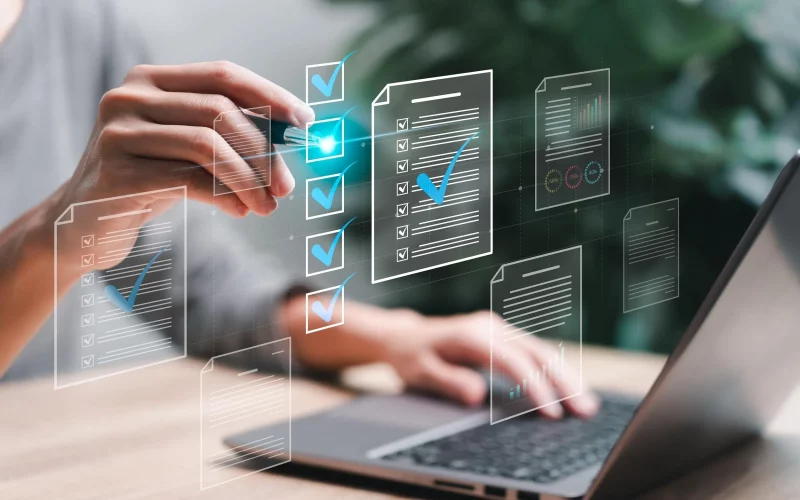Introduction
Small businesses face stiff competition in today’s fast-paced market. Customers expect quick service, relevant offers, and seamless interactions. Limited budgets and lean teams make these demands even tougher. Fortunately, artificial intelligence offers practical solutions. By 2025, AI strategies will be key to how small businesses attract customers, boost sales, and streamline operations.
This article shows how to harness AI for small business growth. You will learn what AI is, why it matters, and which strategies work best. We cover AI-powered marketing, AI customer insights, automation, sales tools, and data-driven decision making. You will also get tips on choosing the right AI tools and planning implementation. Follow these steps to supercharge your business with AI in 2025.
What Is AI and Why It Matters for Small Business Growth?
Artificial intelligence refers to computer systems that learn from data and make decisions. Machine learning, natural language processing, and predictive analytics are common AI techniques. These tools mimic human problem solving but work faster and at scale.
For small businesses, AI means working smarter. You can automate routine tasks, free up staff time, and improve accuracy. AI can analyze customer behavior to tailor marketing and sales offers. It can optimize inventory and detect fraud. By using AI strategies, small businesses can compete with larger firms that have deeper pockets. AI brings enterprise-grade power to smaller teams.
What AI Means for Small Business in 2025
AI, or artificial intelligence, is software that can learn from data and then act on that learning. Many people picture AI as robots or Sci‑Fi brains. For a small business owner, AI is more like a group of invisible helpers. These helpers watch your data—emails, sales numbers, website clicks, and even weather reports. They find patterns. Then they give you tips or do tasks on their own.
Five years ago, only big firms could pay for such smart tech. Now you pay a small monthly fee. You set up an online account, connect your store or accounting system, and let the tool run. Prices start around twenty to thirty dollars a month for entry plans. That is less than most phone bills.
AI tools today focus on a few main areas that matter most to small businesses:
- Admin and email – writing replies, setting meetings, filing paperwork.
- Marketing – finding the right buyers, sending the right message, and timing it well.
- Sales and stock – guessing future demand, ordering enough goods, and pricing them right.
- Customer service – answering questions day and night, solving issues fast.
- Risk and security – spotting fake orders or risky payments before damage happens.
The rest of this guide covers each of these areas in depth. We explain how the AI works, why it matters, and how to begin with simple steps.
Automate Routine Tasks with Intelligent Bots

Email and Calendar Management
Modern AI assistants read incoming messages, sort them by urgency, and draft quick replies that match your tone. They can also scan your Google Calendar, compare it to client availability, and propose meeting times—all before you sip your first coffee.
How to Implement
- Connect a tool like Superhuman AI or Microsoft Copilot to your email account.
- Train it for one week by approving suggested replies.
- Set auto‑rules: urgent orders flagged “reply within two hours,” newsletters moved to a reading folder.
Result
Owners report saving two to three hours per day, time re‑invested in product development or networking.
How AI Improves Customer Outreach

Personalized Marketing with AI
Personalized marketing uses AI to send the right message to the right person at the right time. AI tools analyze purchase history, web clicks, and social media activity. Based on these insights, the system crafts email subject lines, product recommendations, and ad creatives.
Customers are more likely to engage when offers match their interests. Studies show personalized emails deliver up to 6 times higher transaction rates than generic emails. Small businesses can adopt email platforms with built-in AI or integrate plugins that suggest send times and subject lines. Over time, AI learns which messages work best for each segment.
Chatbots and Customer Support
Chatbots use AI-driven automation to handle routine customer questions 24/7. They can answer FAQs, book appointments, and guide shoppers through simple troubleshooting. This reduces response times and frees staff for complex issues.
Modern chatbots use natural language processing to understand context and intent. They can hand off to human agents when needed. On average, businesses that deploy smart chatbots see a 30 percent drop in support costs and a 20 percent boost in customer satisfaction. Small business owners can add chatbots to websites or messaging apps without heavy IT support.
How AI Boosts Sales and Revenue

Predictive Sales Analytics
Predictive analytics applies AI to historical sales and customer data to forecast future trends. By spotting patterns, AI models predict which products will sell next month or which leads are most likely to buy.
Small businesses can use these insights to focus sales efforts on high-value customers. Sales reps get AI-driven lead scores that prioritize follow-up. This increases the win rate and shortens sales cycles. Companies that adopt predictive sales tools report a 25 percent uplift in revenue on average.
Dynamic Pricing
Dynamic pricing uses AI to adjust prices in real time based on demand, inventory levels, and competitor rates. It’s common in e-commerce but now moves into brick-and-mortar through digital pricing displays and mobile apps.
Small retailers can use cloud-based AI pricing tools to stay competitive. For example, a local cafe might raise prices slightly on a busy morning shift and offer discounts on slow evenings. This flexibility can boost margins without alienating repeat customers.
How AI Streamlines Operations
Workflow Automation
AI-driven automation removes manual work from common processes. Invoice scanning, data entry, and report generation can be handled by AI bots. These bots read documents and enter data into your accounting or CRM systems.
Implementing workflow automation cuts errors and saves hours each week. A small accounting firm might reduce invoice processing time from two hours to five minutes. Staff can then focus on advisory roles rather than data cleanup.
Inventory Management
AI inventory tools predict stock needs by analyzing sales, seasonality, and supplier lead times. They send alerts to reorder before a stockout occurs. This reduces lost sales and lowers excess inventory costs.
A small online shop using AI inventory management can reduce holding costs by up to 20 percent. The system also suggests bundle promotions for slow-moving items, turning stale stock into sales and clearing warehouse space.
How AI Enhances Decision Making

Data-Driven Insights
AI platforms transform raw data into dashboard charts and actionable insights. They can reveal which marketing channels drive the best ROI, or which products have the highest profit margins.
Instead of guessing, small business owners can base their plans on real data. If social media ads underperform, AI dashboards highlight the issue and suggest reallocating budget. This agility is vital in a rapidly changing market.
Real-Time Dashboards
Real-time dashboards update as new data flows in. Owners see daily sales, customer feedback, and website traffic at a glance. Alerts can notify managers of unusual spikes or drops, such as a sudden surge in product returns.
Small teams benefit greatly from live updates. Quick course corrections keep businesses on track. A café owner might shift menu promotions midweek when morning rush slows down, based on dashboard insights.
How to Implement AI in Your Small Business

Identify High-ROI Use Cases
Start by listing your biggest pain points: slow support, inventory stockouts, or low online conversions. Match each issue to an AI use case. For example, if customer wait times are high, a chatbot is a clear solution.
Run a pilot project with one department. Measure improvements in metrics like response time or sales per lead. Once you see real gains, scale AI across other areas. This phased approach reduces risk and builds internal momentum.
Choose the Right AI Tools and Vendors
Not all AI tools suit every business. Look for solutions that integrate with your existing software stack—CRM, accounting, and e-commerce platforms. Seek vendors offering free trials or pay-as-you-go pricing.
Check for strong customer support and clear documentation. A vendor that provides templates, best practices, and setup wizards speeds your time to value. Finally, read case studies from similar small businesses to learn from their experiences.
Future AI Trends for 2025
Generative AI for Content Creation
Generative AI models can write blog posts, design graphics, and compose social media updates. Small businesses will use these tools to maintain a steady stream of content without hiring full-time creatives.
By 2025, AI content assistants will integrate directly into marketing dashboards. They will suggest headlines based on trending keywords, draft email copy tailored to each segment, and produce basic images for ads. This lowers cost and keeps messaging fresh.
AI in AR/VR for Retail Experiences
Augmented reality shopping apps let customers “try on” products virtually. Combined with AI recommendations, these experiences will make online shopping more immersive and personalized.
Small boutiques can adopt white-label AR solutions to let shoppers preview how furniture looks in their homes. AI analyzes room photos to suggest layout and color schemes. This blend of AR and AI will drive higher conversion rates and reduce return rates.
AI Strategies Comparison Table
| Strategy | Key Benefit | Example Tool |
|---|---|---|
| Personalized Marketing | Higher engagement and conversion | AI Email Platform |
| Chatbots & Support | 24/7 customer service, lower costs | Chatbot Service |
| Predictive Sales Analytics | Focus sales on high-value leads | Sales Analytics Suite |
| Dynamic Pricing | Optimized margins in real time | Pricing Automation Tool |
| Workflow Automation | Save staff time on manual tasks | RPA Software |
| Inventory Management | Prevent stockouts, reduce holding costs | Inventory AI Platform |
| Real-Time Dashboards | Instant visibility into key metrics | BI Dashboard App |
| Generative AI Content | Streamlined content creation | AI Content Generator |
| AR/VR Retail Experience | Enhanced customer engagement and confidence | AR Shopping App |
Conclusion
AI strategies offer small businesses a powerful toolkit for growth in 2025. From AI-powered marketing and sales analytics to smart automation and real-time insights, these tools level the playing field. You can tailor AI to your unique needs by starting small, choosing the right vendors, and focusing on high-ROI use cases.
Embracing AI means more than adding new software. It requires a mindset shift toward data-driven, customer-centric operations. With the right approach, your small business can unlock greater efficiency, happier customers, and stronger revenue growth.
Call-to-Action: Ready to transform your business? Explore our AI integration guide and start applying these strategies today to supercharge your growth in 2025!












